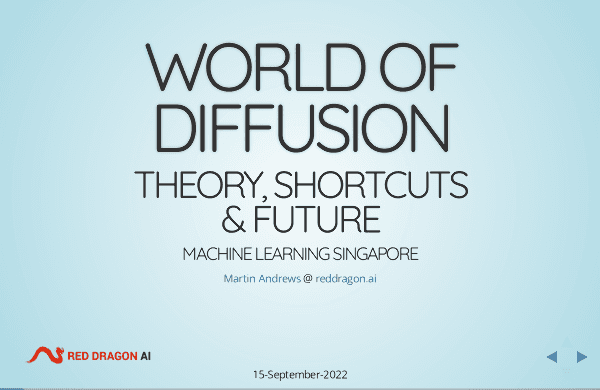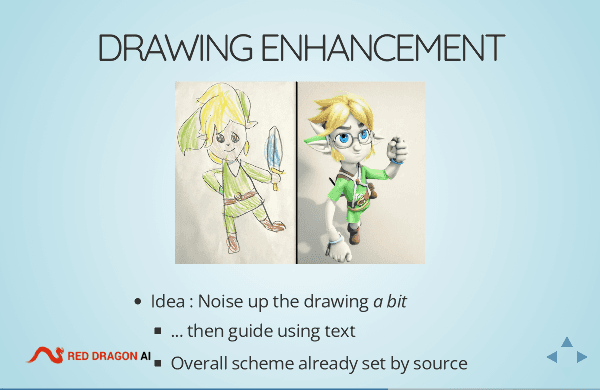- Published on
World of Diffusion : Theory, Shortcuts & Future
- Authors

- Name
- Martin Andrews
- @mdda123
Presentation Link
Sam Witteveen and I started the Machine Learning Singapore Group (or MLSG for short) on MeetUp in February 2017 (it was previously named "TensorFlow and Deep Learning Singapore"), and the thirty-seventh MeetUp had been planned for a long time, because we thought that Diffusion Models were very interesting, but we finally got our act together in September because of the release of "Stable Diffusion".
Diffusion Models are fast taking over the world of generative modeling in Deep Learning. In this event we will look at how Diffusion models work, what are the main models and techniques, and how you can get started in using them yourself to generate and manipulate images.
The meetup was titled "World of Diffusion", and was in two parts:
- How Diffusion Works - My talk
- Although the mathematical foundations of diffusion can be a little daunting, This talk will also highlight the practical techniques that practitioners are using to enable these models to achieve results more quickly, and with higher controllability. It also turns out that the 'diffusion idea' can be extended way beyond the standard settings.
- Investigating Prompt Engineering on Diffusion Models - Sam Witteveen
- Stable Diffusion is taking off across the internet and it is amazing the results you can get. But what prompts and words can you use to get even better images and in styles you want? Sam also walked through techniques and code for getting the best prompts to generate high quality images - and shared his Colab Notebooks.
There's a video of me doing the talk on YouTube (this is a slightly longer version than the one at the MeetUp, likely due to more asides, etc). Please Like and Subscribe!
The slides for my talk, which contain links to all of the reference materials and sources, are here :

If there are any questions about the presentation please ask below, or contact me using the details given on the slides themselves.
